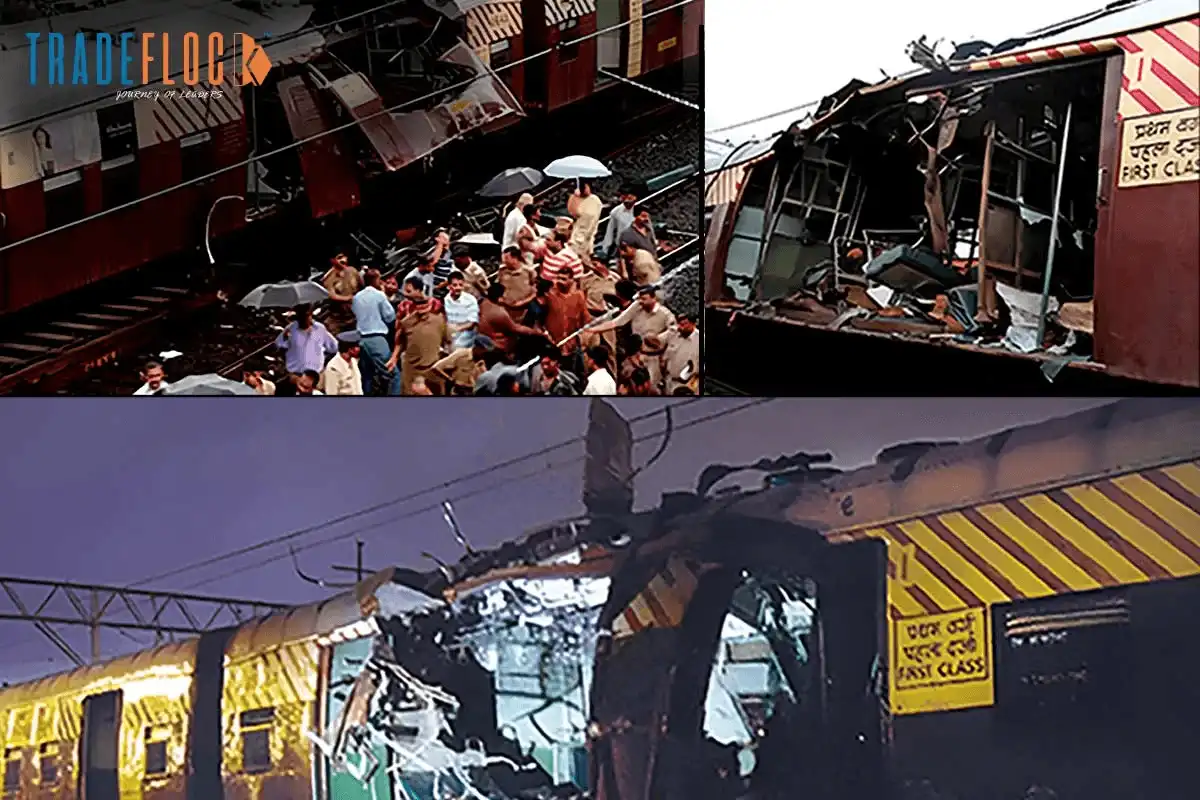On 13th July 2011, Mumbai suffered three coordinated bomb explosions, which officially killed 26 and injured 130. There is no reason not to believe that the actual number of human casualties might have been much higher.
The blasts occurred at the Opera House, at Zaveri Bazaar, and at Dadar West between 18.54 pm-and 19.06 pm. Indian Mujahideen is suspected to have carried out the bomb blasts with the personal involvement of its co-founder Yasin Bhatkal. The heinous and cowardly attack on India’s commercial capital and its lively people is also infamously termed as 13/7.
Table of Contents
Three Blasts and Many Lives
The first bombing took place at Zaveri Bazaar at 18.54 pm, and the device was planted on a motorcycle at Khau Gali. The second blast took place at the Opera House area on Charni Road only a minute later. The device was planted in a tiffin box outside Prasad Chambers and Panchratna building. The third blast took place at Kabutar Khana, Dadar, and here, the device was placed on an electric pole at a bus stand.
Following the blasts, other metropolitan cities of India, including Delhi, Chennai, Hyderabad, and Bangalore, were placed on high alert besides Mumbai. The Home Ministry classified the three blasts as a terrorist act. The breakthrough in the investigation came on 9th August, when Maharashtra Anti-terrorism Squad (ATS) arrested an individual who was alleged to have stolen the motorbike used in the Zaveri Bazaar explosion.
Justice Served
On 23rd January 2012, the Mumbai Police announced the arrest of two suspects – Naqi Ahmed Wasi Ahmed Sheikh and Nadeem Akhtar Ashfaq Sheikh, who were hailing from Darbhanga district of Bihar. The logistics of their operations were alleged to be managed by Yasin Bhatkal.
On 25th May 2012, Maharashtra ATS filed a chargesheet against Naqee Ahmed, Nadeem Shaikh, Kanwar Pathrija and Haroon Naik, all of whom are under arrest. Additionally, the chargesheet named six others including Yasin Bhatkal and Riyaz Bhatkal, Waqas Ibrahim Sad, Danish alias Tarbez, Dubai based Muzaffar Kolah and Tehseen Akhtar as wanted accused on the run. The ATS unit of Mumbai Police declared that Yasin Bhatkal was the mastermind behind the blasts.
Here it deserves a mention that Yasin was on the list of NIA Most Wanted until his arrest on the India–Nepal border, in Bihar, on 28th August 2013. A National Investigation Agency special court sentenced him to death on 19th December 2016 for his involvement in the 2013 Hyderabad blasts. He is currently at the Tihar Jail in Delhi.
In July 2014, the Mumbai ATS arrested a person accused of allegedly funding the 2011 Mumbai attacks, at the Dabolim Airport in Goa. He has been accused of transferring the money to Yasin Bhatkal through Hawala mode to fund the ghastly operation.
A Favourite City of Terrorists?
Here it deserves a mention that Mumbai is not new to terrorist attacks. The commercial epicentre of India has been the focus of terrorist attacks since 1993, and these attacks had led to more than 600 official deaths.
On 12th March 1993, the terrorist bombings in Mumbai, which are suspected to be masterminded by Dawood Ibrahim, officially killed 257 and injured 1400. Dawood is suspected to have ordered and facilitated to organise the bombings through his people, Tiger Memon and Yakub Memon.
Thankfully, Yakub, who was found guilty of the conspiracy behind the unpardonable crime, was eventually handed over the capital punishment by the apex court after twenty years of judicial proceedings but Dawood and Tiger Memon are still evading arrest.
The Four Day Long Attack
Then from 26th-29th November 2008, a 10-member group from the terrorist outfit Lashkar-e-Taiba carried out 12 co-ordinated shooting and bombing attacks for four days in Mumbai.
In two five-star hotels – The Taj Mahal Palace and Tower, Oberoi Trident – and in the Nariman House, people were held as hostages by the terrorists. Chhatrapati Shivaji Maharaj Terminus, the Leopold Café, the Cama Hospital, the Metro Cinema, and the St. Xaviers College were among the other places that suffered terrorist attacks by the group of Lashkar-e-Taiba terrorists on 26/11.
Officially, the barbaric terrorist attacks led to the death of 175 people, and 300 people were officially injured by the series of abominable acts. Among the dead were nine out of the ten terrorists, who were killed by the National Security Guard and other security forces. 20 security force personnel and 26 foreign nationals too died in the 26/11 terrorist attacks. The only surviving terrorist, Ajmal Kasab, was hanged after his crime was conclusively proved through a proper judicial process.
The train bombings on 11th July 2006 in Mumbai were another major terrorist attack on India’s commercial capital, which officially killed 209 people and injured more than 700.
Countering Terrorism
One can easily assume that these terrorist attacks in Mumbai were not only guided by the objective to spread widespread terror but also perhaps to destablise India’s economy. For example, when the Panchratna building in South Mumbai was temporarily closed after the 2011 Mumbai blasts, it resulted in the incurring of a loss of Rs.3 billion per day.
Thankfully, Mumbai has not been subjected to any major terrorist attacks in recent years, but governments cannot and shouldn’t let their guard down till the scourge of terrorism is completely uprooted from Indian soil.
For that, a razor-sharp intelligence network should be complemented by giving security personnel a free hand in handling terrorism, and of course, speedy justice is very much required.





